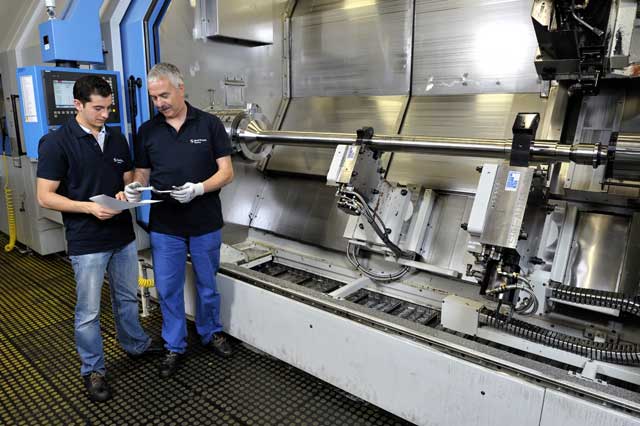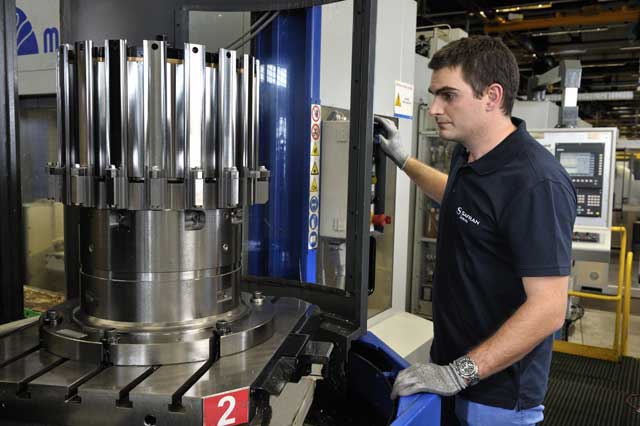CFM International partners General Electric and Snecma have begun manufacturing parts for the first Leap test engine which is due to be run in the third quarter of 2013.
"Components have already been produced for this milestone," says CFM chief Jean-Paul Ebanga. "We are now really in programme execution."
Among the first Leap parts to have been forged and machined at Snecma’s Corbeil plant near Paris are the fan disk and low-pressure turbine shaft. Snecma has overall responsibility for the engine’s low-pressure system.
Ebanga says CFM and its supply chain are ready for the planned rapid ramp-up of Leap production. "Entry into service is four years from now," says Ebanga. "We are already working hard on the industrial capabilities, to be ready on time."
CFM executive vice-president Cedric Goubet adds: "We are preparing ourselves very seriously, with all our external supply base."
 |
|---|
| Turbine Shaft Snecma Villaroche plant |
GE, which provides the high-pressure system for CFM engines, is forecasting that just under 20,000 single-aisle mainline jets will be sold in the two decades to 2031. CFM is producing engines for more than 700 twinjets per year.
So far in 2012, CFM has sold 1,807 engines, comprising 715 current-generation CFM56s and 1,092 Leaps. It says that 853, or 63%, of the 1,349 airliners seating more than 100 passengers ordered in the first nine months of 2012, and for which engine selections have been announced, will be CFM-powered.
CFM says it had secured a total of 4,200 Leap orders and commitments as of 12 October. The Leap has been selected to equip 578 Airbus A320neos, and is the sole-source powerplant for the 1,200 Boeing 737 Max and 330 Comac C919 aircraft to which customers have committed.
"For CFM I think all of this is very good news," says Ebanga.
The Leap-1A and -1C variants - to equip the A320neo and C919 respectively - are scheduled for certification in 2015 and entry-into-service the following year. The 737 Max’s Leap-1B is due for certification in 2016 and service-entry in 2017. CFM is also responsible for supplying the integrated propulsion system for the C919.
 |
|---|
| CFM Leap Fan disk Snecma Corbeil Plant |
"The -1A and -1C are pretty much the same engine," says Goubet."The bulk of the parts not linked to the nacelle interface are almost the same."
The -1B differs from its siblings in having a five-stage, rather than seven-stage, low-pressure turbine.
The C919 is due to be the first Leap-powered airliner to fly, in 2014, as Comac has elected to begin flight testing the aircraft before engine certification has been completed.
Unlike the CFM56 programme, where GE and Snecma compete for service contracts, aftercare for the Leap will be provided through a new entity called CFM Services. "We are deepening our co-operation to include the services side," says Goubet. "Everything for Leap is a CFM Services solution."
Source: Air Transport Intelligence news























